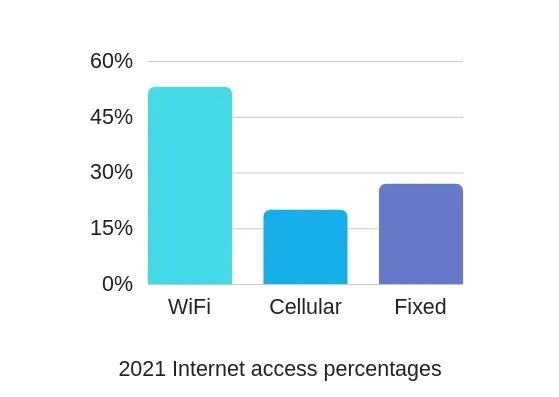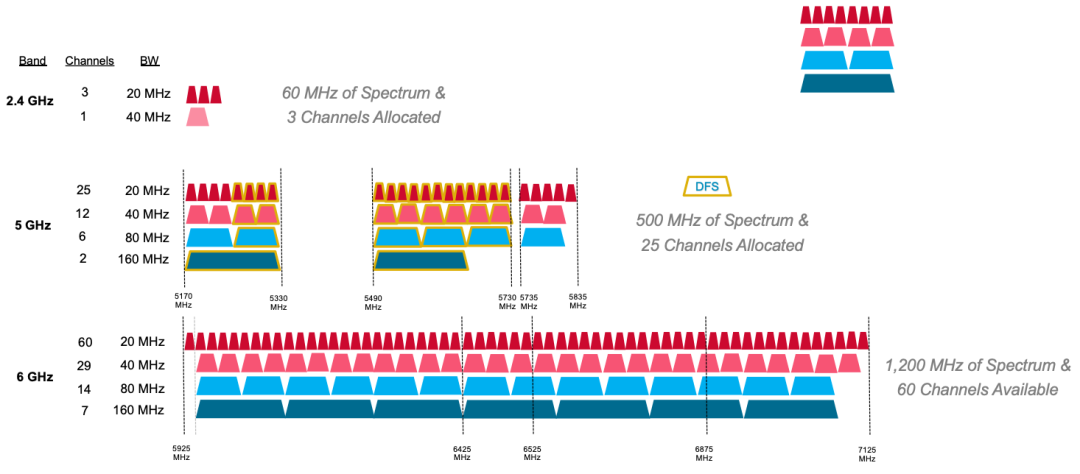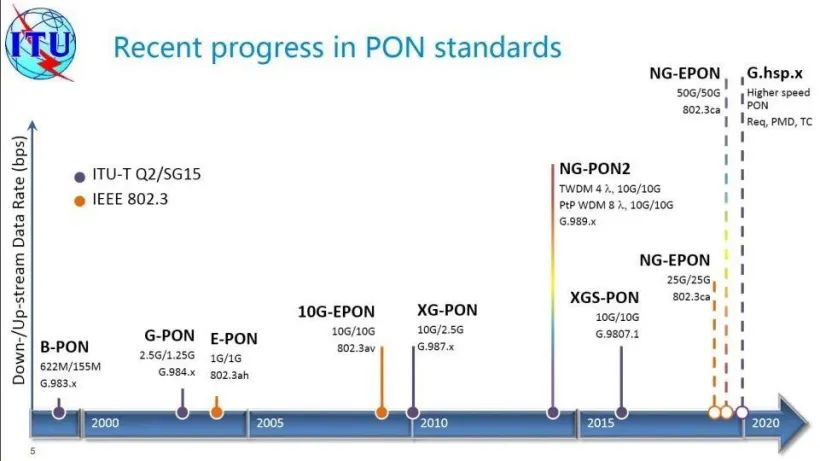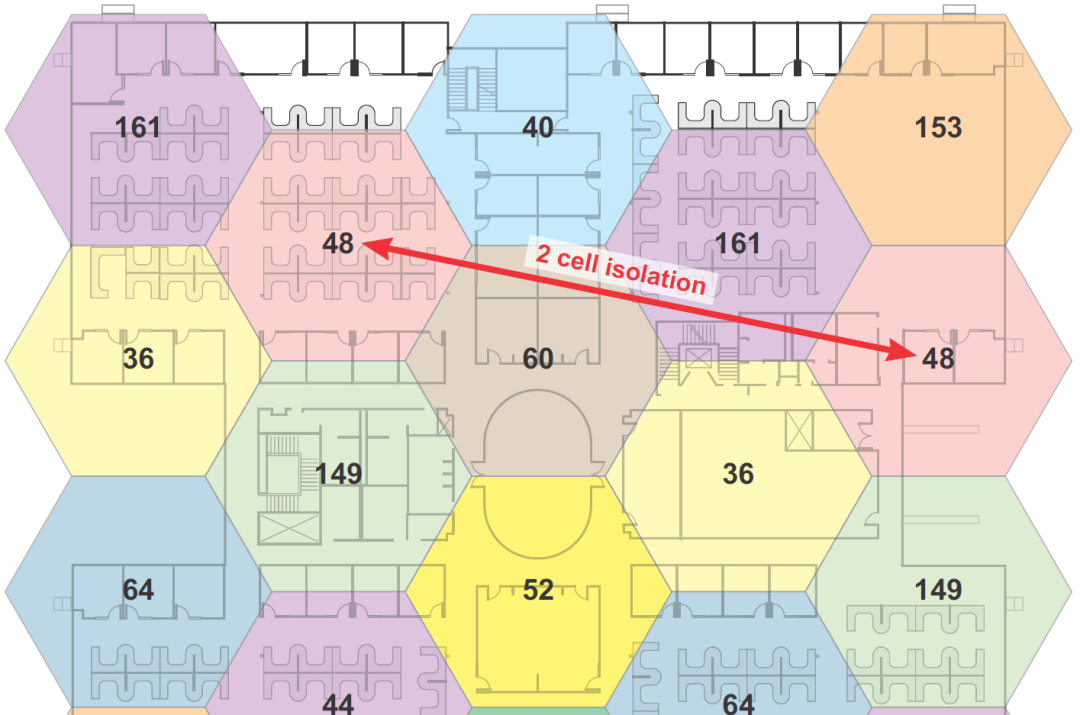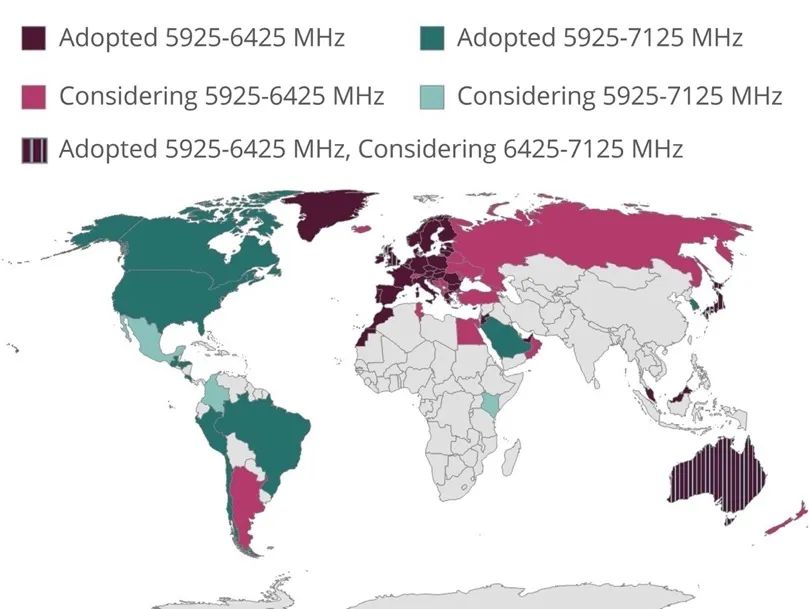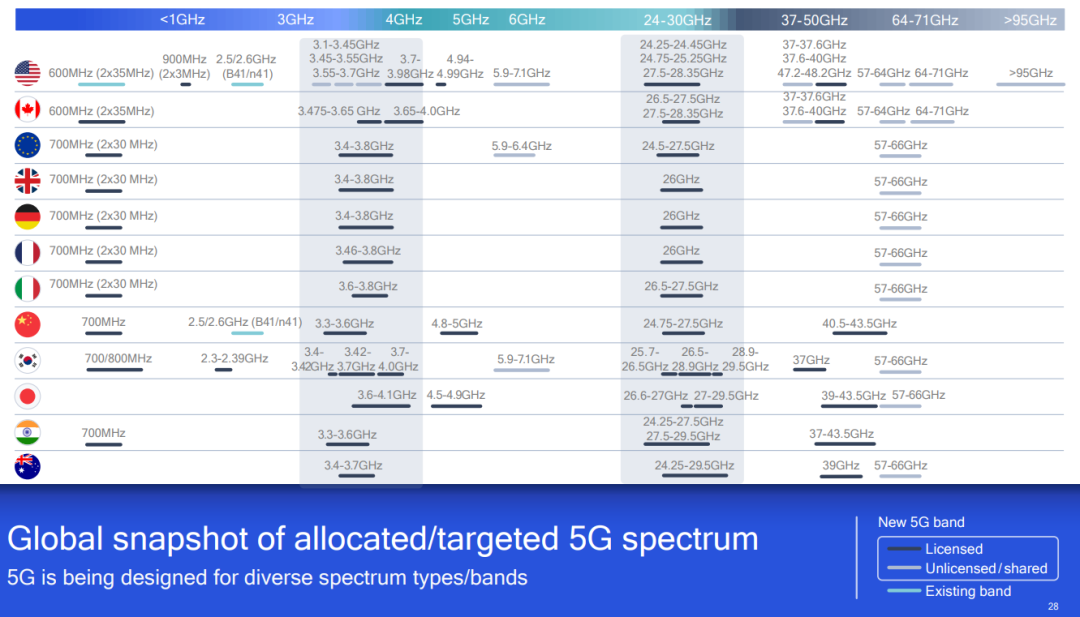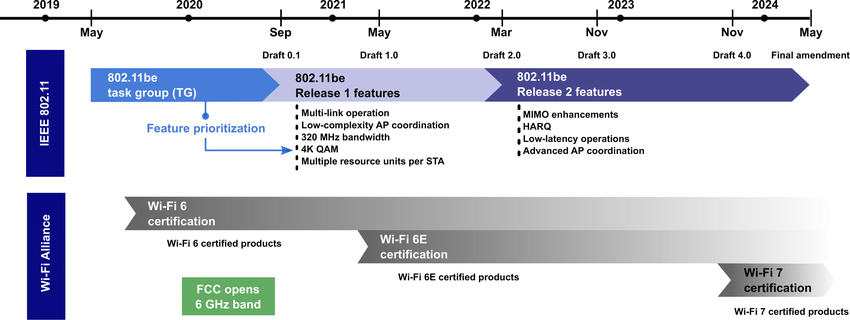Skip to content
Wi-Fi, as the most commonly used internet access technology, is closely related to everyone’s life.
Especially in the past two years, due to the pandemic, more and more social activities have shifted online, and Wi-Fi has played a significant role, significantly reducing the impact of the pandemic on society and the economy.
As shown in Figure 1, according to data provided by Cisco, 50% of global internet traffic in 2021 came from Wi-Fi.
Figure 1. Proportion of Access Technologies for Global Data Traffic in 2021 (Source: Cisco)
For more than 20 years, Wi-Fi has relied on only two frequency bands of 2.4GHz and 5GHz (a total of over 600MHz of spectrum) to carry the growing network demand.
In the previous article (link), we discussed some new technologies in Wi-Fi 6. These technologies can help alleviate network congestion.
However, even if wireless engineers can use numerous advanced technologies to expand network capacity, the rapid increase in the number of wireless devices and the higher speed demands from applications in recent years have ultimately led to spectrum becoming a bottleneck for network capacity.
Currently, the 2.4GHz and 5GHz frequency bands used by Wi-Fi are already very crowded. This is reflected in user experience as increased network latency, decreased user speeds, and more frequent interference between Wi-Fi routers.
To address this challenge, shortly after the launch of Wi-Fi 6, the Wi-Fi industry actively promoted the development of Wi-Fi 6E.
Wi-Fi 6E adopts the core technologies of Wi-Fi 6 and extends the operating frequency band of Wi-Fi 6 to 6GHz (5925-7125MHz) to expand network capacity.
As shown in Figure 2, the additional 1200MHz doubles the spectrum resources available for Wi-Fi compared to the past.
Figure 2. Development History of Wi-Fi Frequency Bands
The 6GHz spectrum can qualitatively enhance Wi-Fi performance. From Figure 3, we can see that 6GHz doubles the number of Wi-Fi channels.
Figure 3. Number of Wi-Fi Channels at Various Frequencies
For the currently most commonly used 40MHz channel, 5GHz can provide 4 regular channels and 8 DFS channels。(Note: The purpose of DFS channels is to protect radar frequencies from interference. When Wi-Fi devices detect that radar is using that frequency band, Wi-Fi will automatically avoid that channel)
On 6GHz, there are up to 29 40MHz channels available for Wi-Fi devices to choose from.
█ Why Are So Many Channels Needed?
To answer this question, we need to view all network nodes as a whole.
From mobile phones, computers to wireless routers and subsequent fiber networks, if any node bottlenecks, it cannot improve network performance. In the past, during the era of 10Mbps to 100Mbps fiber, the bottleneck of network speed was often in the fiber network itself. Simply increasing the speed of Wi-Fi does not significantly impact the overall performance of the network.
Today, with the promotion of the national dual-gigabit infrastructure project, more and more households can access gigabit-speed fiber networks, while enterprise fiber networks can reach speeds of 10Gb.
Fiber technology is also continuously being updated, with fiber technology above 50Gbps appearing in the development roadmap of the International Telecommunication Union (ITU) as early as 2018, and commercial products are expected to emerge soon.
Figure 4. ITU Fiber Technology Development Roadmap
In the past, Wi-Fi devices mainly used 20MHz and 40MHz bandwidths. Our mobile phones and iPads typically come with two Wi-Fi antennas to support MIMO.
According to the data rate calculation table provided by Aruba Networks in Figure 5, Wi-Fi devices using 2xMIMO and 64QAM modulation can achieve a theoretical maximum rate of only about 344Mbps under 40MHz bandwidth(Note: Higher-order modulation requires an excellent signal-to-noise ratio, which is difficult to meet in daily use)。
Figure 5. Theoretical Maximum Data Rate of a Single Channel under Wi-Fi 6
In the case where users already have gigabit fiber, such Wi-Fi performance becomes the bottleneck in the network. At this point, increasing the speed of Wi-Fi becomes meaningful.
By increasing the bandwidth to 80MHz, the maximum rate can exceed 700Mbps, while 160MHz bandwidth can fully meet the needs of gigabit fiber.
Analysis of router usage by users also verifies this trend of increasing bandwidth. According to analyses by Cisco and Aruba on their users, 80MHz bandwidth is gradually becoming the default option for households and enterprises when configuring Wi-Fi networks.
At this point, you may wonder, didn’t the previous article mention that technologies like OFDMA, higher-order modulation, and more MIMO can increase speed and network capacity? Why is there still a need to increase channel resources?
The reason is quite simple: there is no free lunch.
While MIMO can provide multiple channels to increase data rates, the cost is that the additional channels require corresponding transceiver channels, which increases the power consumption of Wi-Fi devices.
Secondly, introducing higher-order modulation and more MIMO channels means that the RF receiver has higher requirements for the signal-to-noise ratio of wireless channels, which reduces the coverage range and the interference resistance of devices.
The essence of OFDMA is to distribute the cake more effectively to users, but it cannot make the cake bigger. Therefore, the most direct and effective way to increase capacity is to widen the bandwidth and increase spectrum resources.
You may also wonder, doesn’t Wi-Fi 6 on 5GHz also support 80 and 160MHz bandwidths? Why is Wi-Fi 6E needed?
To answer this question, we need to discuss it from the perspective of multi-router network deployment.
Currently, the industry’s golden rule for dense Wi-Fi network deployment is the 7-channel reuse scheme. This scheme is the optimal balance point between spectrum efficiency and inter-cell interference.
The so-called 7-channel reuse scheme means that the six adjacent routers surrounding a wireless router all use different Wi-Fi channels.
For example, in the Wi-Fi deployment in a floor office space shown in Figure 6.
Figure 6. 7-Channel Wi-Fi Cell Deployment Scheme
In a network using the 7-channel reuse scheme, Wi-Fi cells on the same frequency can be spaced two different frequency cells apart. Due to the larger distance, the risk of co-frequency interference between cells is very small.
In the past, using a 40MHz channel, this deployment posed no pressure on the spectrum.
However, when users upgrade the channel to 80MHz bandwidth, the current 5GHz spectrum is insufficient.
This is when Wi-Fi 6E comes into play.
From the channel diagram above, we can see that 6GHz offers up to 14 80MHz channels, which can fully meet the requirements. Even in the future, if users upgrade to 160MHz bandwidth, 6GHz can still provide 7 channels to meet network deployment needs.
█ Current Global Development of Wi-Fi 6E
Devices supporting Wi-Fi 6E generally support the entire 6GHz band, but specific usable frequency ranges depend on the frequency band requirements of different countries.
Internationally, the spectrum allocation for 6GHz Wi-Fi mainly follows two directions. The first is a one-step approach led by ITU Region 2 (the Americas), which opens the entire 1.2GHz spectrum (5925-7125MHz) for Wi-Fi use.
The second adopts a gradual approach, first opening 500MHz of the lower 6GHz band (5925-6425MHz) for Wi-Fi use, while continuing to monitor the planning for the higher 6GHz band (6425-7125MHz).
Regions adopting this strategy mainly include the European Union, Australia, Japan, and others.
One of the main reasons is that a significant topic in the WRC-23 agenda 1.2 affects frequency allocation in these countries and regions.
In this topic, the 6425-7125MHz band may be identified as a mobile communication band in certain areas for future 5G or even 6G use, and our country is also an active supporter of this topic.
Figure 7. Global Development of Wi-Fi 6E (Source: Wi-Fi Alliance)
Since 2021, a large number of terminals and network devices supporting Wi-Fi 6E have emerged, and the entire Wi-Fi 6E ecosystem is developing well, with more mainstream devices expected to support Wi-Fi 6E this year.
Figure 8. Wi-Fi 6E Ecosystem
█ Will China Approve the Use of Wi-Fi 6E?
On the issue of 6GHz, our country’s Ministry of Industry and Information Technology has consistently supported allocating the entire 6GHz for 5G and future 6G mobile communication use, and Wi-Fi 6E has not received much attention in China.
This is closely related to our country’s 5G industrial policy and the current availability of mid-band frequency spectrum for 5G.
According to data released by Qualcomm, China has only 100MHz at 2.6GHz and 300MHz at 3.5GHz in the mid-band for 5G, which includes 3.3-3.4GHz specifically allocated for indoor 5G use.
Overall, the total amount of mid-band spectrum is less than that of the EU, North America, and Japan and South Korea.
Figure 9. Global 5G Spectrum Allocation (Source: Qualcomm)
However, since last year, the Hong Kong SAR government has taken the lead in planning the use of Wi-Fi 6E in Hong Kong. In the public opinion collection document released by the SAR government last year, it mentioned the impact of the current crowded Wi-Fi networks on enterprises and individuals.
After several months of opinion collection and discussion, in April of this year, the Hong Kong Communications Authority released the final decision document, adopting a gradual approach, similar to the EU, to first open the lower 500MHz of 6GHz for Wi-Fi use. For the higher 700MHz, Hong Kong will continue to monitor discussions on the WRC-23 agenda 1.2.
I have attached the policy document from the Communications Authority in the references, which you can research if interested.
Figure 10. Hong Kong Communications Authority Public Opinion Collection Document
This frequency spectrum policy in Hong Kong offers a glimmer of hope for Wi-Fi 6E in mainland China.
Historically, Hong Kong and the mainland have generally maintained consistency in planning C-band and millimeter-wave 5G, with Hong Kong often taking the lead in policy release. If this pattern holds, the Ministry of Industry and Information Technology may consider Wi-Fi demands in the future spectrum planning for 6GHz.
In fact, the Wi-Fi network congestion issue is not limited to Hong Kong; major cities in mainland China also face similar problems. In the future, to improve network performance for enterprises and households, relying solely on 5G is far from sufficient, considering enterprise costs, device ecosystems, and the capacity of the three major telecom operators.
Additionally, even if we cannot compare with influential companies in the international mobile communication industry like ZTE, Huawei, and China Mobile, we have large companies in the Wi-Fi industry such as H3C, FiberHome, and TP-link. Even ZTE and Huawei’s enterprise network divisions are important partners in the Wi-Fi ecosystem.
If the 6GHz band is completely allocated to mobile communications, it would be a significant blow to companies whose main business is Wi-Fi products and services. Especially whether Wi-Fi 7 can develop in China will largely depend on whether there are sufficient spectrum resources.
From the historical development of technology at home and abroad, updates in technology are often unpredictable. Relying solely on government policies to bet on a particular technology often carries the risk of misjudgment.
Industrial policies are usually less effective than market policies in ensuring long-term market vitality and international competitiveness of products. Allowing enterprises to determine the future direction of technology development through fair market competition will lead to more rational capital allocation and more effective resource distribution, and also empower enterprises with greater vitality.
Wi-Fi technology is continuously evolving.
Shortly after the launch of Wi-Fi 6 in 2019, the 802.11 working group began research on the next generation of Wi-Fi technology — Wi-Fi 7. Wi-Fi 7, academically known as 802.11be, uses the same spectrum resources as the current Wi-Fi 6E.
Currently, the standard work for Wi-Fi 7 is progressing rapidly, with the first release confirmed earlier this year. The complete standard work is expected to be finalized after 2024, and certified Wi-Fi 7 devices are not expected to be widely available until 2025.
I will focus on introducing the key technologies of Wi-Fi 7 in the next article.
Figure 11. Timeline for Wi-Fi 7
[1] Aruba Networks white paper — Technical Guide to Wi-Fi 6e and the 6 GHz band.
[2] Wi-Fi Alliance – Countries Enabling Wi-Fi 6E.
[3] Qualcomm, 5G spectrum innovation and global update.
[3] Hong Kong Communications Authority — Establishing category licenses to regulate the use and business activities of 6GHz devices for wireless local area networks and changes to public wireless local area network service category licenses.
[4] Khorov, E., Levitsky, I., & Akyildiz, I. F. (2020). Current status and directions of IEEE 802.11be, the future Wi-Fi 7.
Author: Dr. Tang Xin (Technical Director of Spectrum Lab)
Copyright belongs to the original author. If there is any infringement, please contact for deletion.
